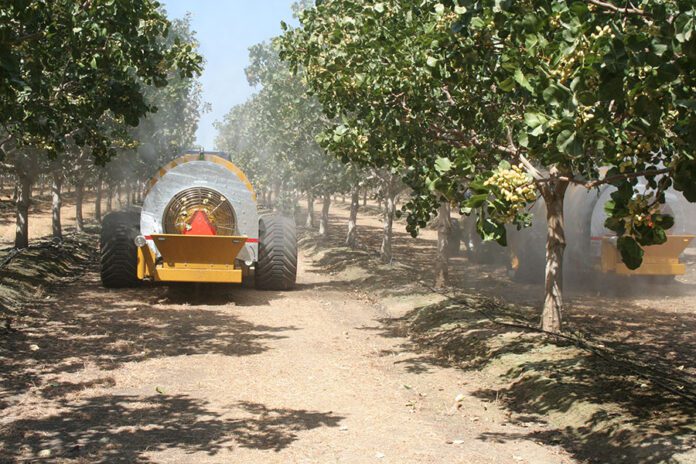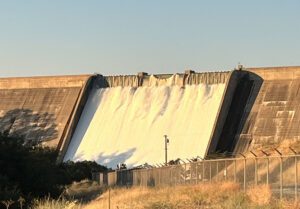
In a landmark decision, the Supreme Court has overturned Chevron Deference, a judicial doctrine that has, for decades, allowed federal agencies substantial leeway in interpreting ambiguous statutes. This ruling marks a significant shift in the balance of power between the judiciary and administrative bodies, promising profound implications for various sectors, including agriculture. For row crop and tree nut growers who have long contended with stringent and often burdensome regulations, the end of Chevron Deference heralds a new era of potential relief and opportunity.
Understanding Chevron Deference
Chevron Deference originated from the 1984 Supreme Court case Chevron U.S.A., Inc. v. Natural Resources Defense Council, Inc. The doctrine established that when a statute is ambiguous, courts should defer to the agency’s interpretation of the law if it is reasonable. This effectively granted agencies like EPA and USDA considerable discretion in shaping and enforcing regulations.
While intended to ensure expertise and efficiency in regulatory matters, Chevron Deference has often led to what many perceive as overreach by federal agencies. This has been particularly problematic in agriculture, where complex and sometimes opaque regulations can significantly impact farming operations and profitability.
The Supreme Court’s decision to overturn Chevron Deference is grounded in a commitment to restoring the proper balance of power among the branches of government. Critics of the doctrine have argued that it allowed unelected bureaucrats to wield legislative power, effectively bypassing the democratic process. By removing this deference, the Court aims to ensure that laws are interpreted and applied based on their plain meaning, without undue influence from the regulatory agencies.
Implications for Row Crop and Tree Nut Growers
For row crop and tree nut growers, the end of Chevron Deference presents several potential benefits. These growers have historically faced a morass of regulations covering everything from pesticide use to water management. The heavy-handed approach of some agencies has often translated into increased costs, operational uncertainty and reduced competitiveness.
Reduction in Regulatory Overreach
One of the most immediate benefits of this decision is the potential reduction in regulatory overreach. Without the cushion of Chevron Deference, agencies will need to ensure that their regulations are more closely aligned with the clear intent of Congress. This could result in a more predictable and transparent regulatory environment, allowing growers to plan and operate with greater confidence.
Enhanced Judicial Oversight
With courts no longer deferring to agency interpretations, there will be enhanced judicial oversight of regulatory actions. This means if a grower believes a regulation is overly burdensome or inconsistent with the statute, they can challenge it in court with a higher likelihood of success. Judges will now scrutinize the agency’s interpretation more rigorously, potentially leading to more balanced and reasonable regulations.
Encouragement of Legislative Clarity
The overturning of Chevron Deference may prompt Congress to draft clearer and more precise legislation. Ambiguities in the law have often been a source of contention, leading to varied interpretations by different administrations. Clearer statutes would reduce the room for regulatory agencies to impose overly stringent rules, thus providing a more stable regulatory environment for growers.
Economic Benefits
By curtailing excessive regulation, the decision could lead to significant economic benefits for growers. Compliance with complex regulations often involves substantial costs, including administrative burdens, legal fees and the implementation of specific practices or technologies. A more balanced regulatory framework could lower these costs, improving the overall profitability of farming operations.
Specific Areas of Impact
Several specific areas within the agricultural sector stand to benefit from this shift in judicial philosophy:
Pesticide and Herbicide Regulations
Row crop growers sometimes rely on pesticides and herbicides to manage pests and weeds. The regulation of these substances has been a contentious issue, with agencies like the EPA imposing stringent restrictions based on varying interpretations of environmental laws. The end of Chevron Deference could lead to more balanced regulations that consider both environmental protection and the practical needs of growers.
Water Rights and Usage
Water management is crucial for both row crop and tree nut growers, especially in regions prone to drought. Regulations governing water usage, often influenced by interpretations of the Clean Water Act, have sometimes been seen as excessively restrictive. With greater judicial oversight, there may be a more equitable approach to water rights, balancing environmental concerns with agricultural needs.
Land Use and Conservation Programs
Programs aimed at land conservation and sustainable farming practices, such as those administered by the USDA, can also be affected. While these programs are essential for environmental stewardship, the regulatory requirements can sometimes be overly complex or misaligned with the realities of farming. A shift toward clearer, more straightforward regulations could enhance participation and effectiveness.
Food Safety and Inspection
Tree nut growers, particularly those involved in the production of almond, walnut and pecan, are subject to rigorous food safety regulations. While ensuring food safety is paramount, the administrative burden can be significant. By fostering clearer legislative guidance and reducing arbitrary regulatory changes, the Supreme Court’s decision may lead to a more efficient and grower-friendly inspection process.
Case Study: The Impact on California Almond Growers
To illustrate the potential benefits, consider the case of almond growers in California. The state produces approximately 80% of the world’s almonds, making it a critical player in the global market. However, almond growers have faced numerous regulatory challenges, particularly related to water usage and pesticide application.

Water Usage
California’s complex water rights system and stringent regulations have made water access a contentious issue. The ambiguity in the interpretation of water laws has often led to restrictive measures that do not account for the nuances of agricultural needs. The end of Chevron Deference could lead to more balanced water management policies that better support the agricultural sector while ensuring sustainable usage.
Mindy Patterson | President, Cavalry Group
Almond growers rely on specific pesticides to protect their crops from pests. Regulatory changes based on broad interpretations of environmental laws have sometimes led to sudden restrictions on essential pesticides. Greater judicial scrutiny of such regulations could lead to more stable and predictable policies, enabling growers to plan their pest management strategies more effectively.
While the overturning of Chevron Deference presents significant opportunities, it also poses challenges. The shift places a greater burden on Congress to draft clear and precise legislation. This requires a deep understanding of the agricultural sector and a commitment to balancing various interests, including environmental protection and agricultural productivity.
Growers and industry groups will need to engage actively with legislators to ensure that their concerns are heard and addressed. Advocacy efforts will be crucial in shaping future legislation that supports sustainable and profitable farming practices.
Moreover, the judiciary will now play a more prominent role in interpreting agricultural laws. This underscores the importance of a well-informed and balanced judiciary that can navigate the complexities of agricultural regulation. Growers and their advocates may need to invest in legal expertise to effectively challenge and shape regulations in this new landscape.
For growers, this presents an opportunity to operate with greater confidence and profitability. However, realizing these benefits will require active engagement with the legislative and judicial processes to ensure that future regulations support productive farming practices. As the agricultural sector adapts to this new reality, I am hopeful that the potential for positive change is substantial, offering a brighter future for growers and the broader agricultural community.
Mindy Patterson is the president of The Cavalry Group, a member-based company protecting and defending the Constitutional and private property rights of law-abiding animal owners, animal-related businesses, growers and ranchers legislatively and legally nationwide.















